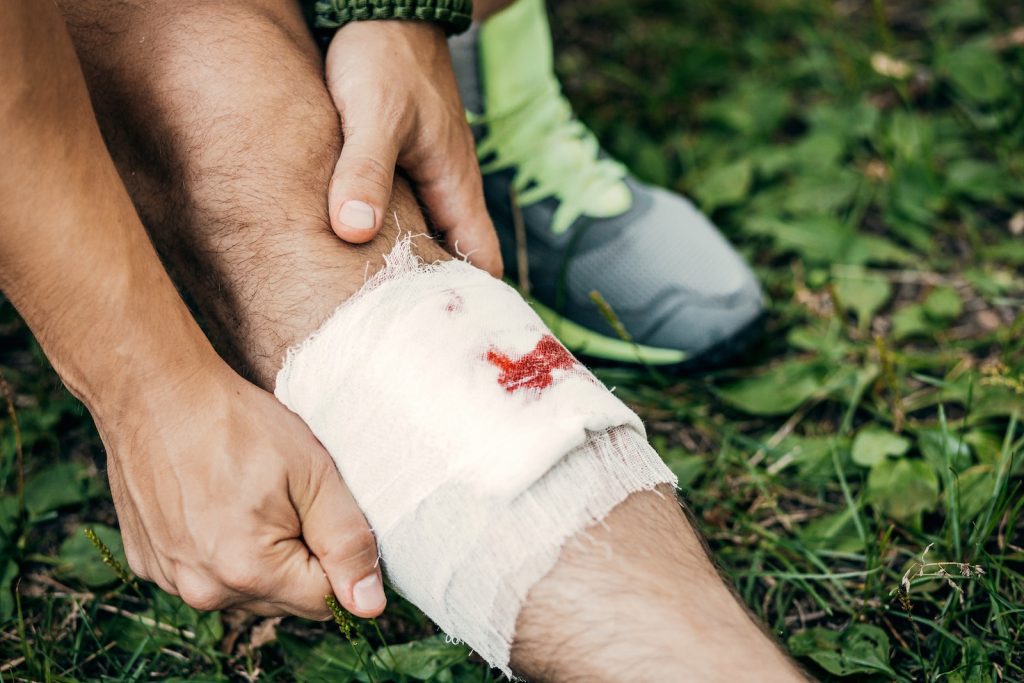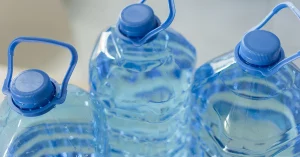Accidents can happen at any time and in any place. There really is no “safe space” in the world we live in. We are surrounded by dangers on all sides, some in nature, some man-made, and some that walk around on two legs as predators in society.
Fortunately, we live in a highly complex society, which includes advanced medical services, available around the clock, to take care of any injures we incur. That’s an important part of our infrastructure. But what if that’s not available? What if we’re in a post-disaster situation? Or what if we’re out in the wilderness, far from those services? You’ve got to know how to dress a wound in the wilderness and how to prevent infection from starting.
Carry a Good First-Aid Kit
Dressing any wound without the right materials to work with is next to impossible. Yes, you can use dry moss or spider webs for bandages; but that requires taking the time to look for those materials, not something you want to have to do while you or someone else is bleeding. Clothing works for makeshift bandages as well, but who carries extra clothing on a hike or while they are in the field hunting?
Most survival kits only include a couple of adhesive bandages, a roll of gauze and maybe some antiseptic as a “survival first-aid kit.” I suppose that’s better than nothing, but if you or a family member has a wound that’s serious enough that you’re concerned about dressing it, I doubt that will be enough. What you really need is what’s known as a trauma kit. That contains enough materials to deal with a serious injury, something like a gunshot wound.
When we’re looking at how to dress a wound in the wilderness, it’s all about having the right things to work with. If you’re just looking for a personal first-aid kit to deal with dressing your own wounds in the wilderness, than I would recommend getting something like a military IFAK. There are a number of different companies who produce their own versions of this. However, if you are looking for something big enough to take care of a family or group, then you will need something larger. You can build your own kit, which needs to contain (at a minimum) the following:
- Various sizes of larger bandages (sanitary napkins actually make wonderful bandages)
- Medical tape
- Antiseptic
- Butterfly bandage or Steri-strips (to close wounds where the skin is open)
- Disinfectant (alcohol or hydrogen peroxide)
- Pressure bandage (the Israeli Bandage is excellent)
- Tourniquet
Please note that this is not a complete first-aid kit; it is merely the minimum items you need to carry, in order to treat a wound in the wilderness.
How to Dress a Wound in the Wilderness
When it comes to first-aid, a little knowledge can go a long way. The actions that are taken by the first person to respond to the wound are critical in saving the patient’s life, especially in the case of more serious wounds and injuries. First-aid must be applied, before moving the patient to the hospital.
But before doing anything, you need to assess the situation. it is quite possible that you can see an injury and focus so much on that injury, that you miss a more serious injury that the same patient has, allowing them to bleed out, while trying to staunch the flow of blood from the injury you see. One place this can happen is with a gunshot wound, where the exit wound is usually much more serious than the entrance wound. But if they are laying on that wound, you may not know it is there.
Assessment isn’t limited to just looking for wounds. You want to make sure that you check the whole person. A couple of key areas you need to look at, before being concerned about how to treat that would, are whether that person is able to breathe and whether they are at risk of hypothermia. While wounds are important and shouldn’t be ignored, these other areas can kill too.
Once you are sure you know what is going on with the patient, then it’s time to treat the wound. Time is of the essence. Fortunately, the steps needed to treat that wound are rather consistent:
- Clean the wound out to remove debris. Use water first; any water that is purified sufficiently for drinking, is also useable for cleaning out the wound. Once you have flushed out any debris, clean it with a disinfectant, such as alcohol or hydrogen peroxide to kill germs.
- Apply an antiseptic cream to the wound to help prevent infection. If you don’t have any antiseptic cream, then burdock, cloves, garlic, eucalyptus, juniper, myrrh and turmeric, or any combination thereof, can be used as natural antiseptics.
- If the wound is a gash, where the skin is separated, pull the skin together and hold it closed (edges touching) with butterfly closures or StreiStrips.
- Cover the wound with enough absorbent bandaging material (gauze or cloth) to soak up the blood. How much will depend on the severity of the wound. Tape that material in place or use a pressure bandage to hold it.
- Apply pressure to the wound to slow bleeding. This can either be with a pressure bandage or your hand.
- Transport the patient to someplace where they can receive further medical care.
Dressings need to be changed as they soak up blood and especially as they get dirty. Since the main purpose of any dressing is to keep the wound clean, in an effort to control infection, a dirty bandage is self-defeating. Your first-aid kit should contain enough supplies so that you can change dressings, as needed.
Using Clotting Agents and Tourniquets
Sometimes, it’s necessary to do more than just bandage a wound. Injuries which knick or cut an artery, especially a major artery, will have spurting blood, because the heart is pumping blood down those arteries. So it may not be enough to just know how to dress a wound in the wilderness; you may need to take it a step farther.
There are three basic ways of stopping blood that is spurting from this sort of wound:
- Using a clotting agent
- Applying a tourniquet
- Packing the wound
Clotting agents work by heat, cauterizing the wound. They either come in granular form or in a bandage. Placed in the wound, it is necessary to apply pressure, while the agent heats up and cauterizes the wound. This will hurt quite a bit, so you will probably need some help holding the patient down.
Tourniquets can be used for cutting off blood to the limbs, thereby preventing it from pumping out through a wound. But to do this, the tourniquet must be placed as high up the limb as possible, and must be tightened enough to crush the arteries, thereby blocking off the blood flow. There is a risk of the person losing the limb from this, so a tourniquet should only be used if there is a risk of them bleeding out. Always mark their forehead with a large “T”, so that medical personnel will know to look for a tourniquet.
Packing the wound refers to pushing sterile gauze into the wound with your thumb or finger (that means literally sticking your finger into the wound with the gauze), for the purpose of putting enough pressure on the artery to crush it, much like a tourniquet does. It is less dangerous to the patient, in the sense of losing the limb, but harder to do effectively, increasing the risk to their life.
Preventing Infection
As you can see in the title, my intent for this article is to talk about how to dress a wound in the wilderness and preventing infection. Of the two, preventing infection is the hardest. There were many more people who died of infection, before the 1900s, than from bleeding out. That’s because even a small wound can allow bacteria into the body, where it can cause an infection.
We have to assume that any wound is going to be infected with bacteria from the start. Even if whatever caused that injury was perfectly sterile (an unrealistic fantasy), the bacteria on the skin will enter the wound, starting an infection.
There are cases where those wounds can be extremely infected from the start. Being clawed by any wild predator can be extremely dangerous in this regard, as there will always be decayed flesh underneath their claws. Likewise, a knife that is used for skinning animals, but has not been properly cleaned, can be a carrier of the same sort of bacteria.
This is why it is so important to clean the wound thoroughly, including cleaning it with a disinfectant and applying an antibiotic cream. But what if you don’t have those available? That’s where we need to turn to herbal medicine and use whatever we can find from the earlier list. While those may not be as potent as something from the pharmacy, our modern medicine has its roots in herbal medicine, so it shouldn’t be ignored.
In addition, it is a good idea for the patient to take antibiotics orally. If they were in the hospital, that’s what the doctor would prescribe, as a preventative measure, even if there is no sign of infection. The most likely antibiotic to be prescribed for this is Amoxicillin. If you don’t have that available, then it can be very helpful to use the herbs listed above. Garlic and turmeric are especially good antibiotics.
Unfortunately, you can’t buy antibiotics over the counter in the United States, without a prescription. However, if you ever make a trip to Mexico, you can buy them in the pharmacies there. The Mexican pharmaceutical industry is excellent and their prices are much more reasonable than what we find here at home.
Disclaimer: I am not a physician. The information included in this article is commonly available and the same sort of information you would learn in any first-aid class. It is provided for educational purposes only and should not be understood to be medical advice. If you are unsure about what to do, please consult competent medical authority.




